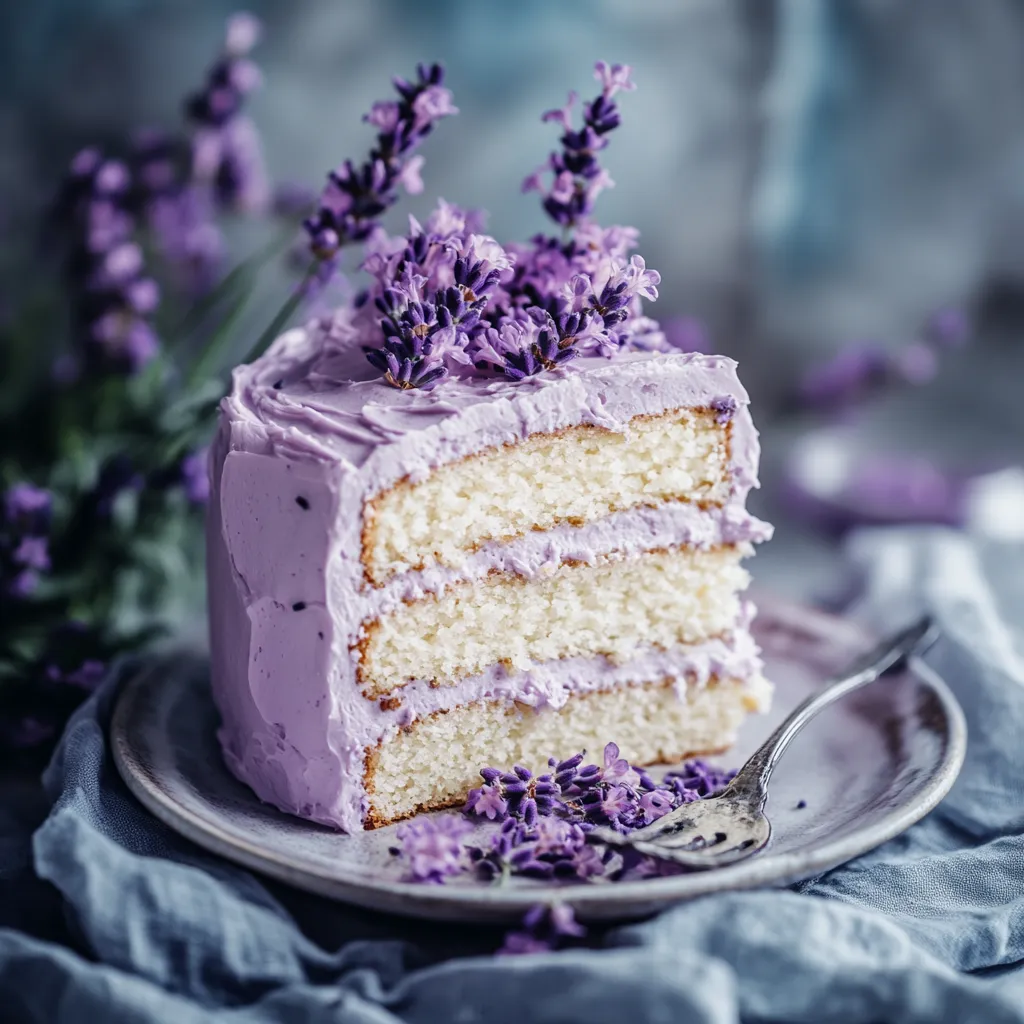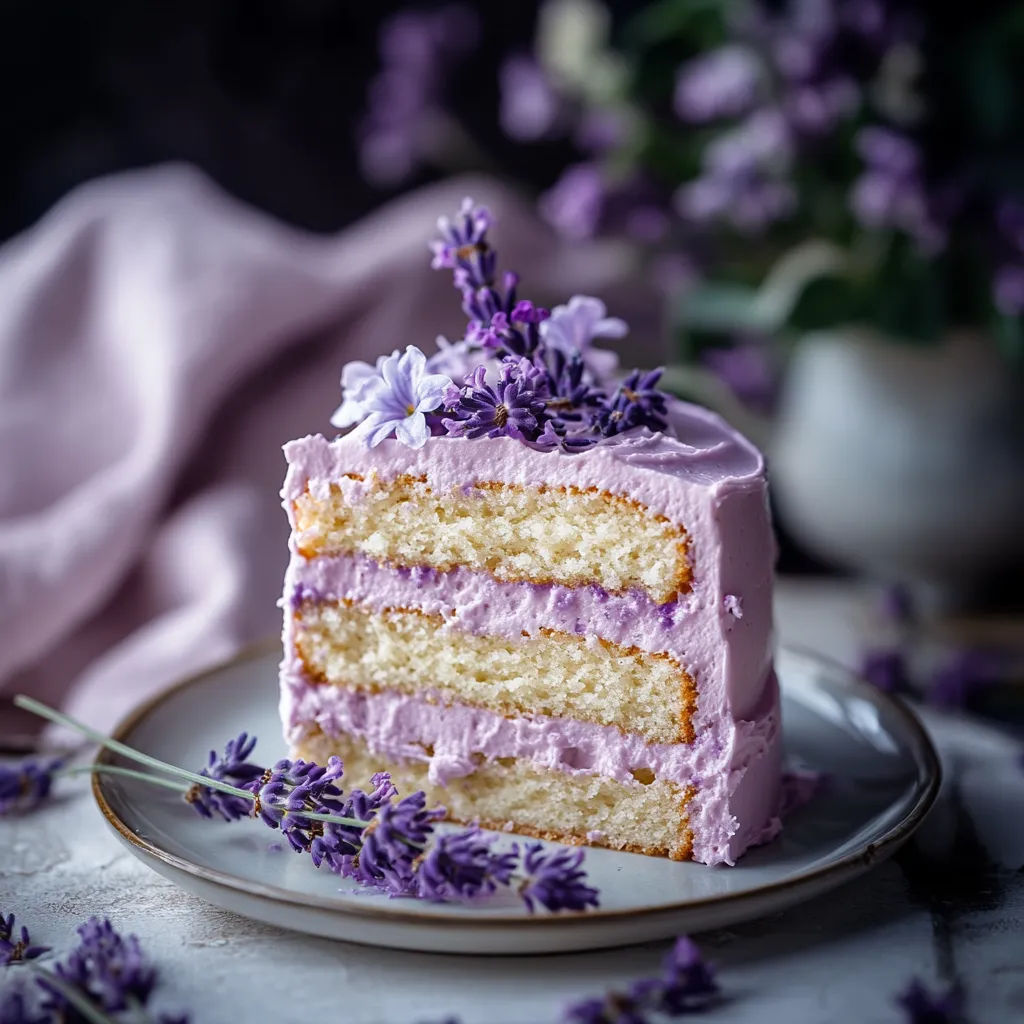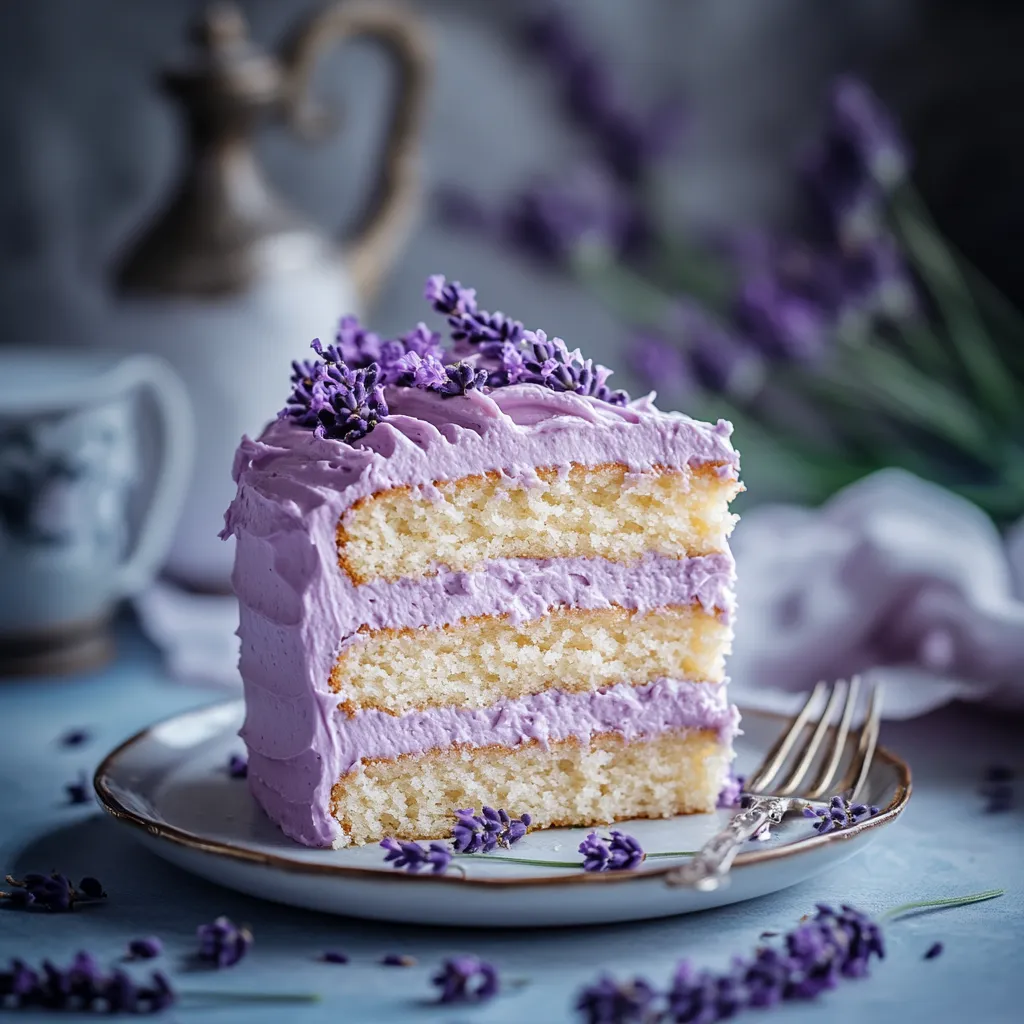 Pin it
Pin it
This delicate lavender cake with lavender buttercream frosting offers a delightful floral twist on traditional cake recipes. The subtle lavender flavor creates an elegant dessert perfect for spring gatherings, afternoon teas, or any special occasion where you want to impress guests with something unique yet approachable.
I developed this recipe after a trip to Provence where I fell in love with lavender fields. The fragrance was so captivating that I became determined to capture it in a dessert that everyone could enjoy without feeling overwhelmed by the floral notes.
Ingredients
- Dried culinary lavender: Adds the signature floral flavor; ensure you use food-grade culinary lavender, not decorative varieties which may be treated with chemicals
- Buttermilk: Creates tenderness and slight tanginess that balances the sweetness; look for full-fat buttermilk for best results
- Room temperature eggs and butter: Crucial for proper emulsion and even texture; plan ahead and set these out 1 hour before baking
- Vanilla extract: Complements and softens the lavender notes; use pure extract, not imitation, for best flavor
- All-purpose flour: Provides structure without being too heavy; avoid cake flour which would make the texture too delicate for this recipe
Step-by-Step Instructions
- Prepare Baking Pans:
- Grease two 8-inch round cake pans thoroughly, ensuring every corner is covered. Line the bottoms with parchment paper circles cut to fit exactly. This double protection ensures your cakes will release perfectly without sticking. The parchment should lay flat against the bottom with no air bubbles or wrinkles.
- Create Lavender Infusion:
- Crush dried lavender buds using a mortar and pestle or spice grinder until they release their oils and become powdery. This step is crucial as whole lavender buds can create unpleasant texture in the final cake. The crushing releases the essential oils that will perfume your batter beautifully.
- Cream Butter and Sugar:
- Beat softened butter on medium speed for 2 minutes until creamy, then gradually add sugar while continuing to beat. Continue beating for 4 to 5 minutes until the mixture becomes noticeably lighter in both color and texture. This extensive creaming incorporates air that helps the cake rise properly.
- Incorporate Eggs Carefully:
- Add whole eggs one at a time, beating for 30 seconds between each addition. Then add egg yolks one by one, allowing each to fully incorporate before adding the next. This methodical approach prevents curdling and ensures a silky smooth batter with proper emulsion.
- Alternate Dry and Wet Ingredients:
- Begin and end with the dry ingredient mixture, adding one-third of the flour mixture followed by half the buttermilk, then another third of the flour followed by remaining buttermilk, and finally the last portion of flour. Mix on lowest speed just until ingredients disappear into the batter. Overmixing at this stage will develop gluten and result in a tough cake.
 Pin it
Pin it
The dried lavender is truly the star of this recipe. When I first attempted making this cake I used decorative lavender from a craft store which left my cake tasting bitter and perfumey. Once I discovered proper culinary lavender everything changed. The aroma fills my kitchen with such a calming scent that baking this cake has become a form of aromatherapy for me.
Adjusting Lavender Intensity
The amount of lavender in this recipe creates a pleasantly subtle floral note that most people enjoy. However, lavender potency can vary depending on freshness and variety. For first-time bakers, I recommend starting with just 2 teaspoons in the cake and 1 tablespoon in the syrup. This creates a more delicate flavor profile that won’t overwhelm those new to floral desserts. You can always increase the amount in future bakes once you understand your preference.
Serving Suggestions
This lavender cake pairs beautifully with earl grey or chamomile tea, creating a sophisticated afternoon tea experience. For a more decadent presentation, consider serving with fresh berries, especially blackberries or blueberries, which complement the lavender wonderfully. A small scoop of vanilla bean ice cream alongside a slice transforms this into a restaurant-quality dessert. For brunch gatherings, I often serve thin slices with honey-drizzled yogurt for a sweet but not too indulgent option.
Making Ahead and Storage
The unfrosted cake layers can be baked up to two days ahead; wrap them tightly in plastic wrap once completely cool. Store at room temperature in a cake keeper or airtight container. The simple syrup can be made up to one week ahead and stored in the refrigerator in a sealed jar. Assembled and frosted cake will stay fresh for up to four days when stored in an airtight container. The lavender flavor actually develops more complexity after the first day, making this an ideal make-ahead dessert.
 Pin it
Pin it
Indulge in this elegant and aromatic lavender cake—you’ll feel like you’ve brought a piece of Provence home with you.
Frequently Asked Questions
- → Can I use fresh lavender instead of dried culinary lavender?
Fresh lavender can be substituted, but you'll need to use approximately three times the amount (3 tablespoons fresh for 1 tablespoon dried). Ensure it's culinary-grade lavender that hasn't been treated with chemicals. Rinse fresh lavender thoroughly and remove the buds from stems before using.
- → How do I prevent my cake from tasting soapy or too perfumed?
To avoid an overpowering lavender flavor, use only culinary-grade lavender and the exact measurements specified. Crush the dried lavender finely to distribute the flavor evenly, and don't increase the steeping time for the simple syrup beyond the recommended 15-20 minutes.
- → Can this cake be made in advance?
Yes! You can bake the cake layers up to two days ahead and store them wrapped tightly in plastic wrap at room temperature. The lavender simple syrup can be made up to a week in advance and stored in the refrigerator. Assemble and frost the cake the day before serving for best results.
- → What can I use instead of buttermilk?
Make a quick buttermilk substitute by adding 1 tablespoon plus 1 teaspoon of white vinegar or lemon juice to a measuring cup, then filling to the 1¼ cup line with regular milk. Let it stand for 5-10 minutes until slightly thickened before using.
- → How should I decorate this cake?
For an elegant finish, consider decorating with fresh lavender sprigs, edible flowers, or a light dusting of powdered sugar. For color, adding a drop of purple food coloring to a portion of the frosting creates beautiful lavender-colored piped decorations.
- → How long will this cake stay fresh?
The assembled cake will stay fresh for up to 3 days when stored in an airtight container at room temperature. For longer storage, refrigerate for up to 5 days, but bring to room temperature before serving for the best flavor and texture.
